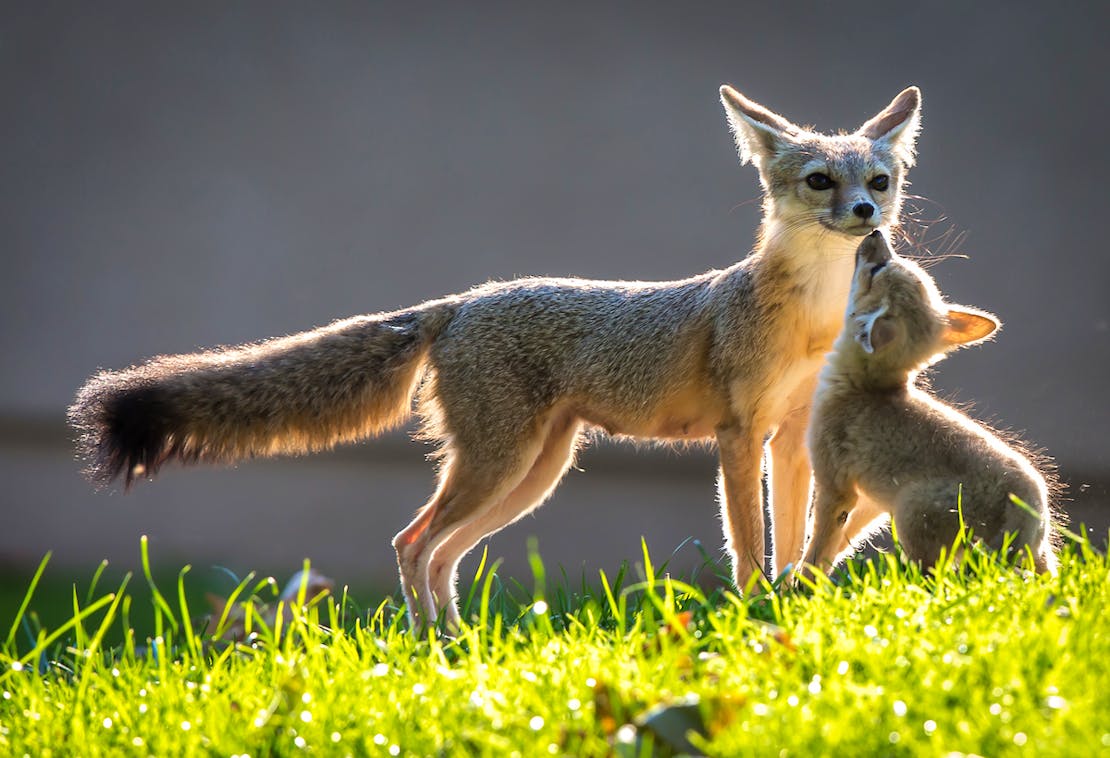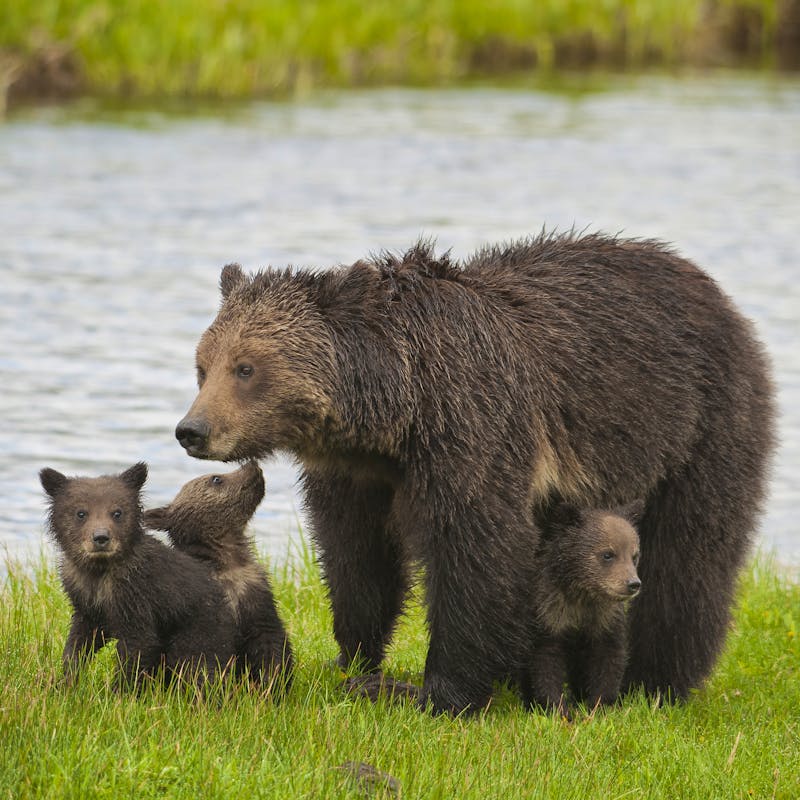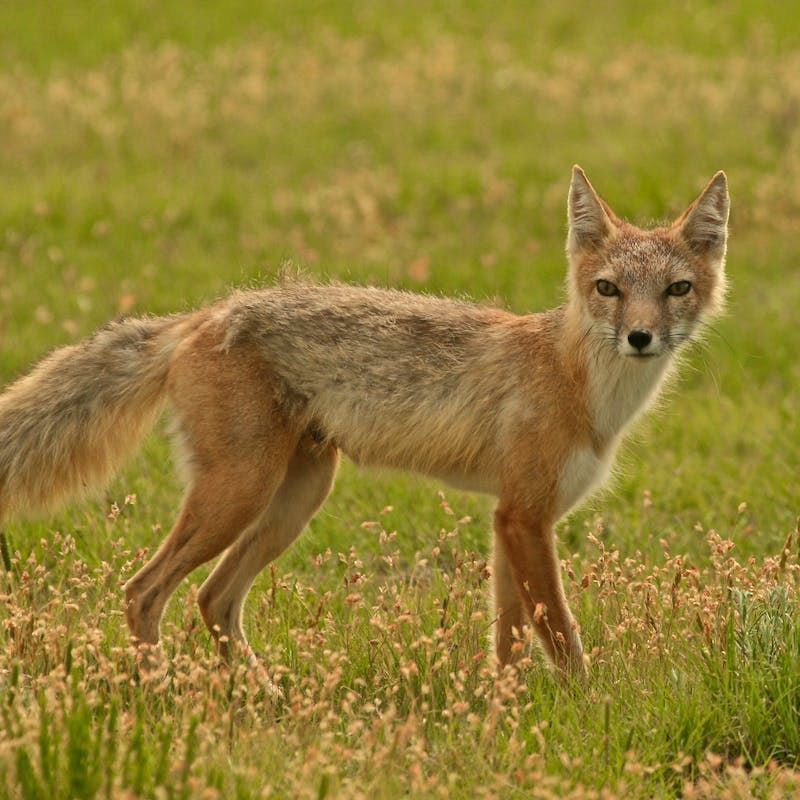Join our mobile Rapid Response Network!
You can be the first to hear about how we’re going to hold this administration accountable and how you can fight back for wildlife!
San Joaquin kit foxes are the smallest foxes in North America.
They have big ears and long bushy tails and are named after California’s San Joaquin Valley, where they are endemic, meaning they do not live anywhere else in the world.
Why are San Joaquin Kit Foxes Endangered?
The San Joaquin kit fox is federally listed as endangered and listed as threatened by California.
These foxes were once widespread across the San Joaquin Valley’s grasslands, but habitat loss, predation and human encroachment have drastically reduced their range. The population is continuing to decline with recent estimates suggesting fewer than 3,000 left in the world. This is primarily due to habitat loss and fragmentation caused by the conversion of natural habitat for human use, such as utility-scale solar projects, agriculture, roads and housing.
This reduction in habitat shrinks the areas where the foxes can live and creates "pinch points" that limit their movement and fragment populations. When habitats become isolated due to development, foxes can no longer move between different areas to find food, mates and shelter. This isolation can lead to inbreeding, reducing genetic diversity and making the population more susceptible to disease and other threats.
Habitat destruction and fragmentation, especially human development, is a major threat because it attracts the foxes’ predators like coyotes. Pesticides, disease and climate change are also threats to San Joaquin kit foxes.

Defenders' Impact
Defenders works tirelessly to save San Joaquin kit fox habitat in California and to help protect native grasslands in one of the fastest growing areas in the country. We advocate for thoughtful renewable energy siting to ensure projects are not placed in San Joaquin kit fox habitat or corridors and encourage permanent protection of vital habitats.
What You Can Do
Stand up for habitat protections including speaking to decision-makers to ensure continued or restored habitat connectivity for the species when acquiring land or deciding on development.
Californians should also encourage local government officials to be more thoughtful about the amount of protected habitat needed to mitigate impacts from solar energy development.
The San Joaquin kit fox is facing a sarcoptic mange disease epidemic within urban populations. If you see a fox that appears sick, do not approach or handle it, and report the sighting to the California Department of Fish and Wildlife.

About
The San Joaquin kit fox was originally found throughout most of the San Joaquin Valley in Central California. Today’s estimates show these foxes now occupy less than 10% of its historical range and are only on the edges of the San Joaquin Valley from southern Kern County up to San Joaquin County on the west and up to Stanislaus County on the east, and a few populations exist within the Valley floor. The core populations are found within the Carrizo Plain national Monument, Western Kern County and the Ciervo-Panoche Area.
The population of San Joaquin kit foxes is estimated to be as low as 3,000 individuals.
The San Joaquin kit fox are active mostly at night and are known for their curious nature. They live in underground dens, which are needed to keep them cool in the summer and warm in the winter.
Kit fox parents will care for their pups until they are able to find food for themselves, at about 4 to 5 months old.
Kit foxes primarily eat rodents and other small animals, including black-tailed hares, desert cottontails, mice, kangaroo rats, squirrels, birds and lizards. Kit foxes do not need to drink water since their prey provides enough liquid for them to survive.
Featured
The Fabulous Foxes of California’s San Joaquin Valley
Let’s jump into some amazing facts about the San Joaquin kit fox, uncover what threatens them — and their habitat — and find out what you can do to help them!
News










